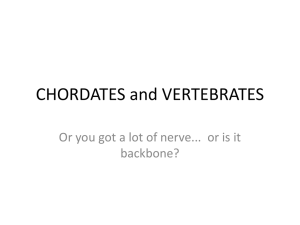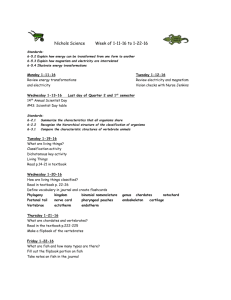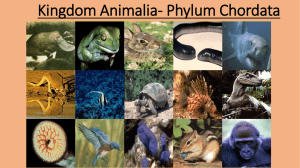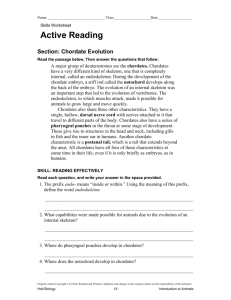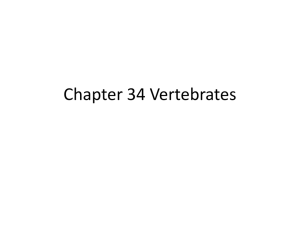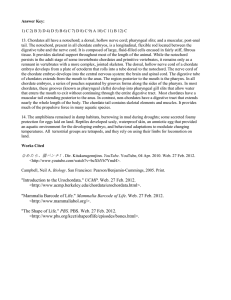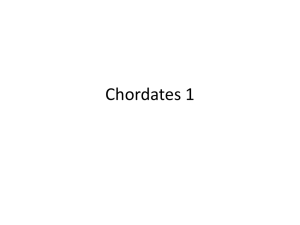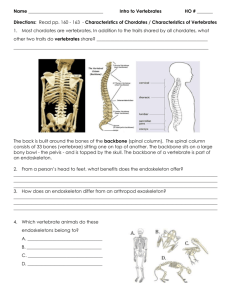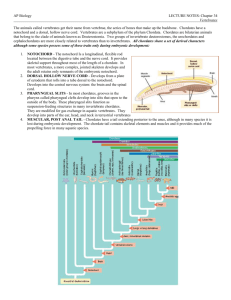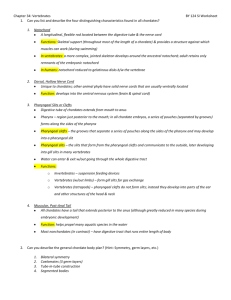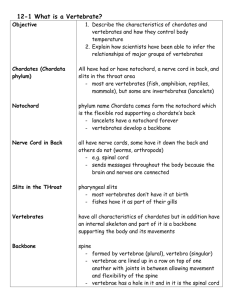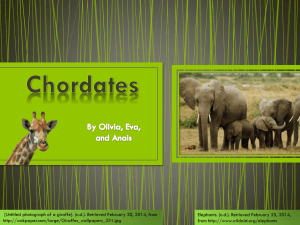KEY page 5 exam 2 review
advertisement
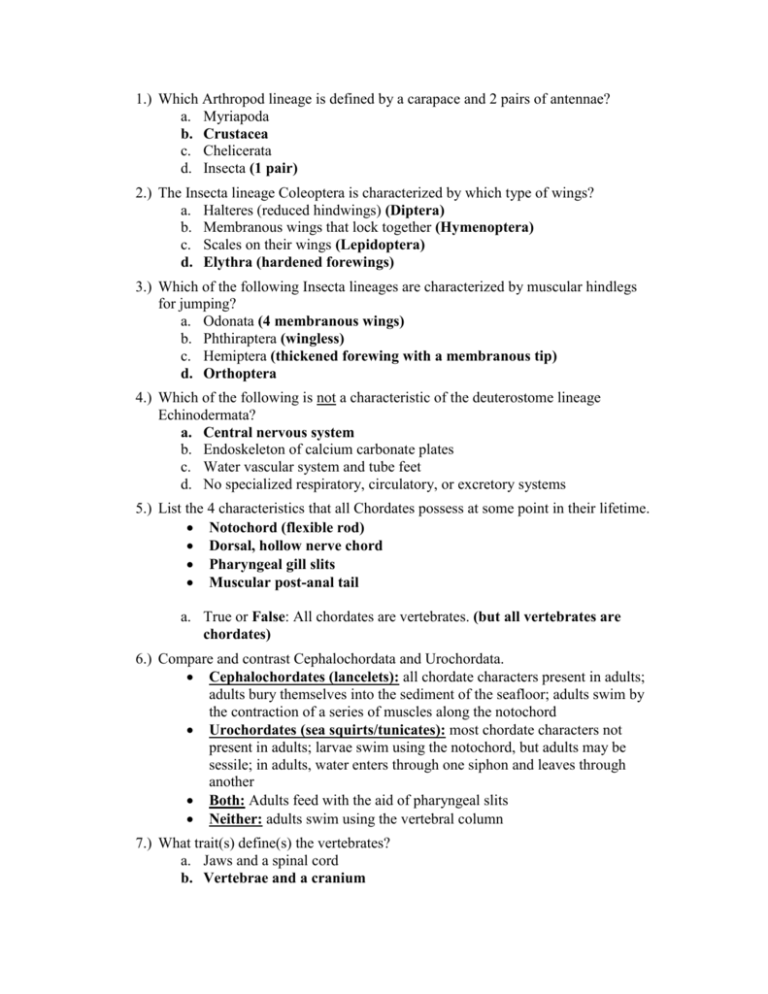
1.) Which Arthropod lineage is defined by a carapace and 2 pairs of antennae? a. Myriapoda b. Crustacea c. Chelicerata d. Insecta (1 pair) 2.) The Insecta lineage Coleoptera is characterized by which type of wings? a. Halteres (reduced hindwings) (Diptera) b. Membranous wings that lock together (Hymenoptera) c. Scales on their wings (Lepidoptera) d. Elythra (hardened forewings) 3.) Which of the following Insecta lineages are characterized by muscular hindlegs for jumping? a. Odonata (4 membranous wings) b. Phthiraptera (wingless) c. Hemiptera (thickened forewing with a membranous tip) d. Orthoptera 4.) Which of the following is not a characteristic of the deuterostome lineage Echinodermata? a. Central nervous system b. Endoskeleton of calcium carbonate plates c. Water vascular system and tube feet d. No specialized respiratory, circulatory, or excretory systems 5.) List the 4 characteristics that all Chordates possess at some point in their lifetime. Notochord (flexible rod) Dorsal, hollow nerve chord Pharyngeal gill slits Muscular post-anal tail a. True or False: All chordates are vertebrates. (but all vertebrates are chordates) 6.) Compare and contrast Cephalochordata and Urochordata. Cephalochordates (lancelets): all chordate characters present in adults; adults bury themselves into the sediment of the seafloor; adults swim by the contraction of a series of muscles along the notochord Urochordates (sea squirts/tunicates): most chordate characters not present in adults; larvae swim using the notochord, but adults may be sessile; in adults, water enters through one siphon and leaves through another Both: Adults feed with the aid of pharyngeal slits Neither: adults swim using the vertebral column 7.) What trait(s) define(s) the vertebrates? a. Jaws and a spinal cord b. Vertebrae and a cranium c. Endoskeleton constructed of bone d. Endoskeleton constructed of reinforced cartilage 8.) What happens to the 4 chordate characteristics in vertebrates during development? Dorsal hollow nerve chord develops into spinal chord Pharyngeal slits develop into gills in aquatic species Notochord helps organize body plan in development Post-anal tail—some keep, in others disappears during embryo development
